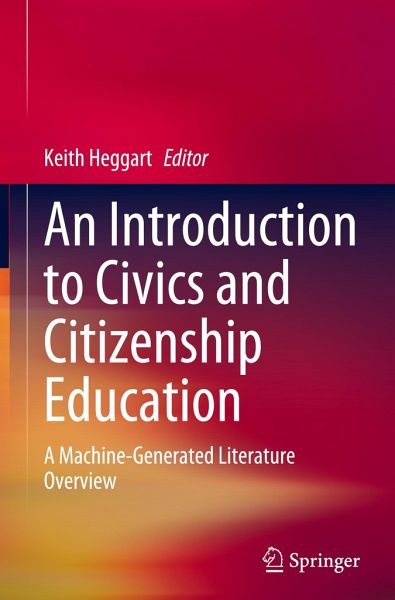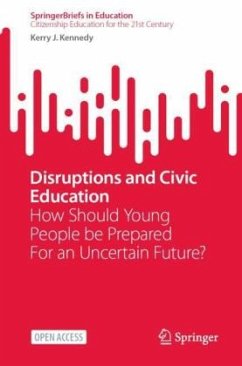
An Introduction to Civics and Citizenship Education
A Machine-Generated Literature Overview
Herausgegeben: Heggart, Keith

PAYBACK Punkte
65 °P sammeln!
This book serves as a starting point for pre-service teachers and researchers by providing a concise and thorough summary of key themes within the field of civics and citizenship education. The field of civics and citizenship education is both complex and contested in local and international jurisdictions. It is also a key site for political and policy interventions by governments and other interested parties. While this activity makes the field a vibrant one, it also means that it can be challenging for teachers and researchers to enter and understand the ongoing debates and discussions and t...
This book serves as a starting point for pre-service teachers and researchers by providing a concise and thorough summary of key themes within the field of civics and citizenship education. The field of civics and citizenship education is both complex and contested in local and international jurisdictions. It is also a key site for political and policy interventions by governments and other interested parties. While this activity makes the field a vibrant one, it also means that it can be challenging for teachers and researchers to enter and understand the ongoing debates and discussions and the implications these present for their research and educational practice. The book begins with a detailed examination of the history of civics and citizenship education from a variety of perspectives and in different locations. It recognizes and documents how the place and importance of civics and citizenship education has changed over the last century and how this has been realized in various educational initiatives. It also examines the current state of educational and policy-level initiatives in civics and citizenship education, noting the differences between different state and country approaches. This book also undertakes a detailed consideration of the different typologies of civics and citizenship education that have been formulated by various researchers, including notions like justice-oriented citizenship, activist citizenship, and critical citizenship. It examines the theoretical foundations of both active citizenship education and global citizenship education and how these have been enacted in school settings. Furthermore, it examines the place of citizenship in higher education institutions and non-formal educational settings, including practices and statements about the importance of developing global citizenship in these arenas. It also presents a number of different case studies showcasing the variety of approaches to civics and citizenship education and discusses the opportunities and challenges educators and researchers face when researching and implementing it.












